Iron Age necropolis that predates Rome unearthed near Naples
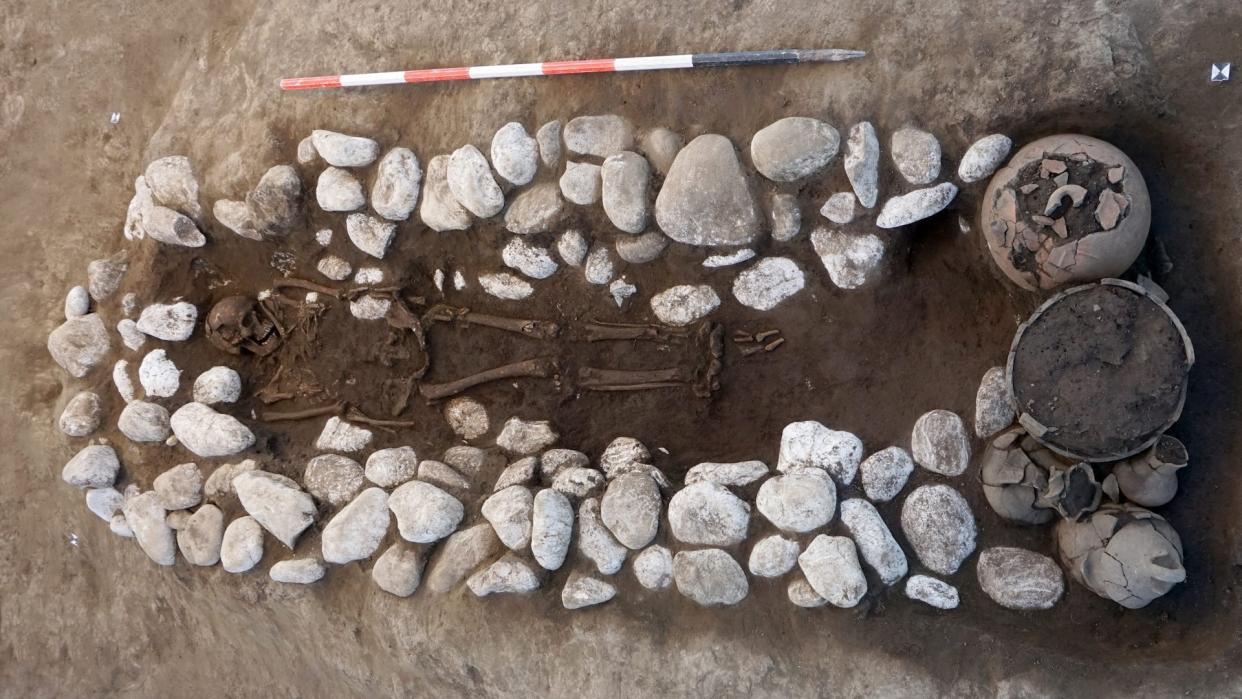
An ancient necropolis discovered near Naples, Italy was used to bury the dead about 2,800 years ago, around the time the city of Rome was founded about 100 miles (161 kilometers) to the northwest.
The discovery gives researchers a rare insight into the Iron Age cultures that existed before the Roman domination of the region. The astonishing finds near the town of Amorosi, about 30 miles (48 km) northeast of Naples, include 88 burials in "pit tombs" of both men and women.
The men were typically buried with weapons, whereas the women were often buried with bronze ornaments, including bracelets, pendants, brooches — called "fibulae," and pieces of amber and worked bone, according to a translated statement from the Italian Ministry of Culture.
The archaeologists who excavated the site have also unearthed large numbers of pottery vases of different shapes, which were usually placed in the tombs at the feet of the deceased. They think the burial ground predates the Samnites, the people who lived in the region a few hundred years later and were frequent enemies of the early Romans.
Related: Why didn't Alexander the Great invade Rome?
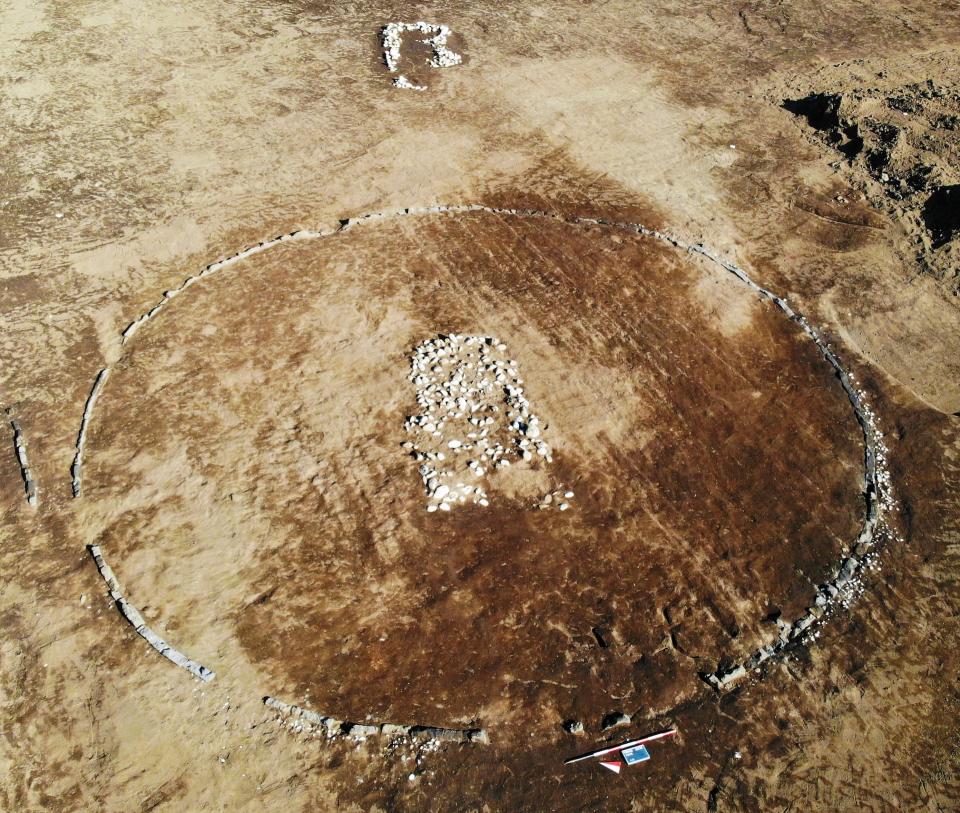
Early Italy
According to legend, the mythical hero Romulus founded the city of Rome in 753 B.C. amid a dispute with his twin brother Remus; but archaeologists think Rome developed from a union of several hilltop villages after about the tenth century B.C., during the Iron Age.
The early Roman state fought many wars against its neighbors, including Etruscan city-states and other Latin-speaking peoples; and in the fourth century B.C., the Romans fought a series of wars against the Samnites, who mainly lived southeast of Rome in the mountainous Apennine region.
Rome was ultimately victorious, however, and the Samnites were assimilated into Roman society after the Third Samnite War, from 298 until 290 B.C., after which Rome went on to conquer the whole of Italy and to start colonies further afield.
The ancient necropolis near Amorosi seems to have been established in the Samnite region, but hundreds of years before the Samnites arrived there, possibly from central Italy.
Archaeologists think the people who founded the necropolis belonged to what's been called the "Pit Tomb" culture that existed throughout much of central and southern Italy during the Iron Age.
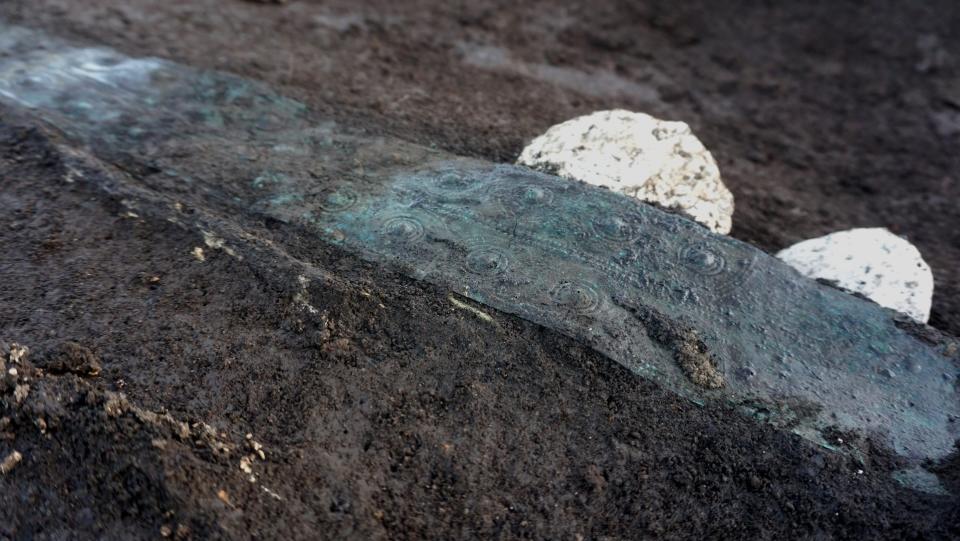
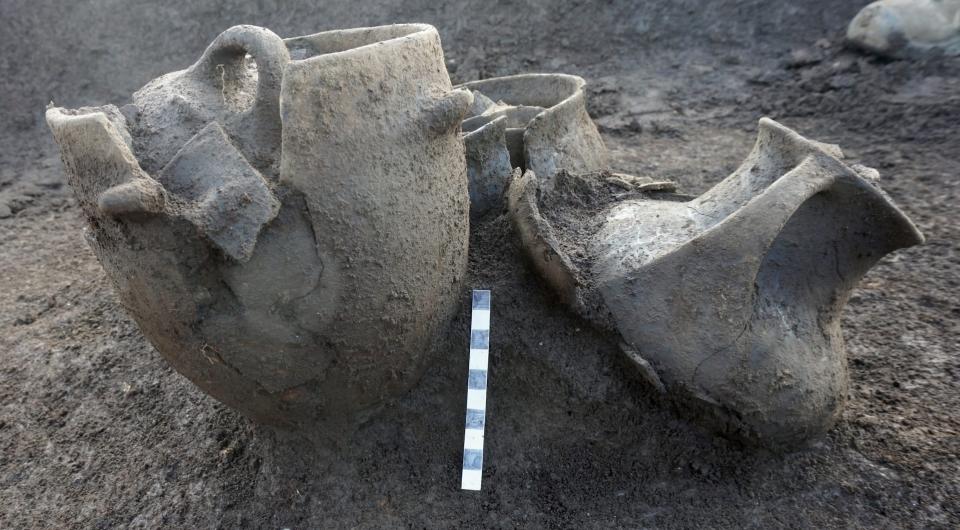
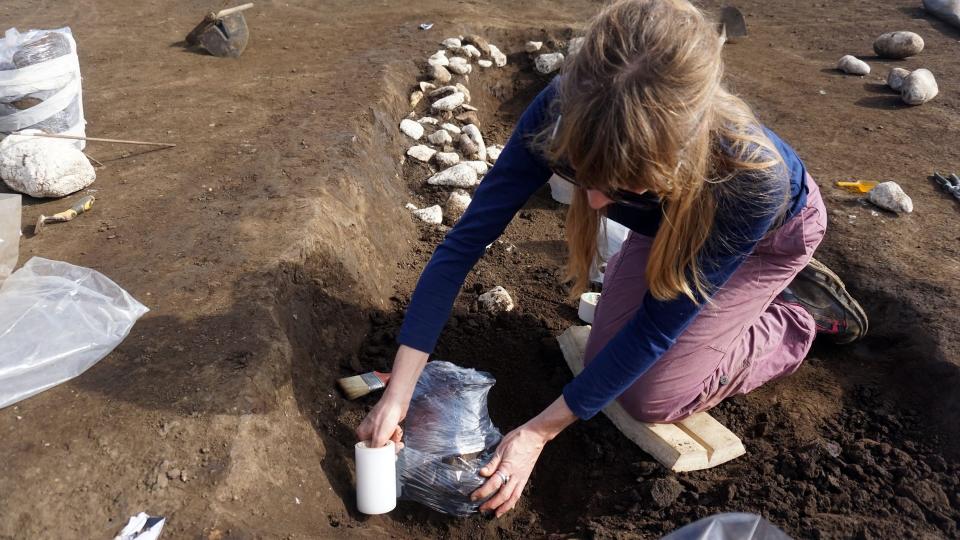
Ancient necropolis
The burial ground near Amorosi was discovered by archaeologists investigating the area before a new power plant is built there. The power plant is intended to supply electricity to a high-speed upgrade of the railway between Naples and the city of Bari, on Italy's Adriatic coast.
As well as the pit tombs, the necropolis features two large burial mounds — about 50 feet (15 meters) across — that the archaeologists think cover the tombs of elite members of the ancient society.
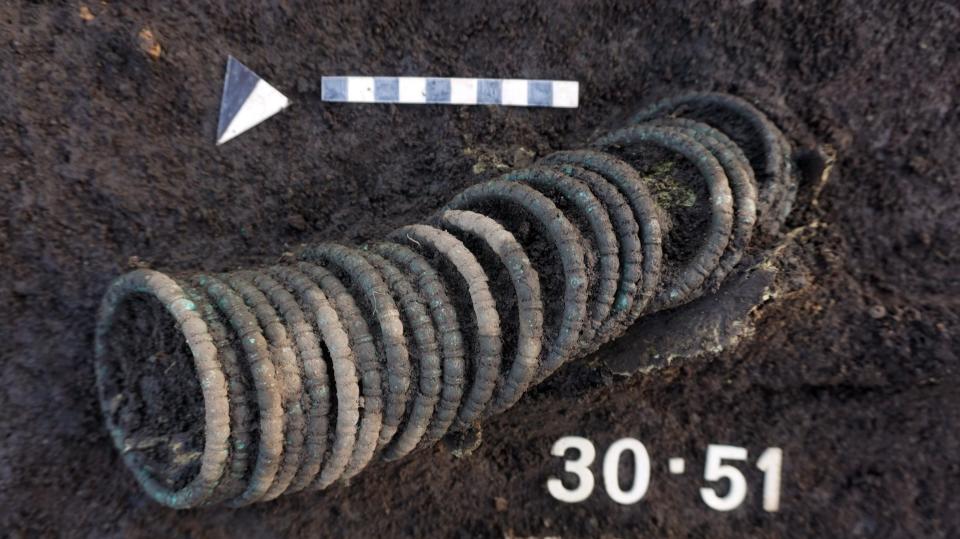
Related stories
—1,700-year-old Roman shipwreck was stuffed to the gills with fish sauce when it sank
—Sacred chickens, witches and animal entrails: 7 unusual ancient Roman superstitions
—Romans kept poisonous, narcotic seeds concealed in bone vials, new discovery reveals
The mounds are now the only visible features of the necropolis, and have been known about for millennia, but the latest excavations have only now revealed the many tombs around them, according to news reports.
The tombs, artifacts and human remains they contain will now be studied in a laboratory that's been set up at the site, the statement said.

